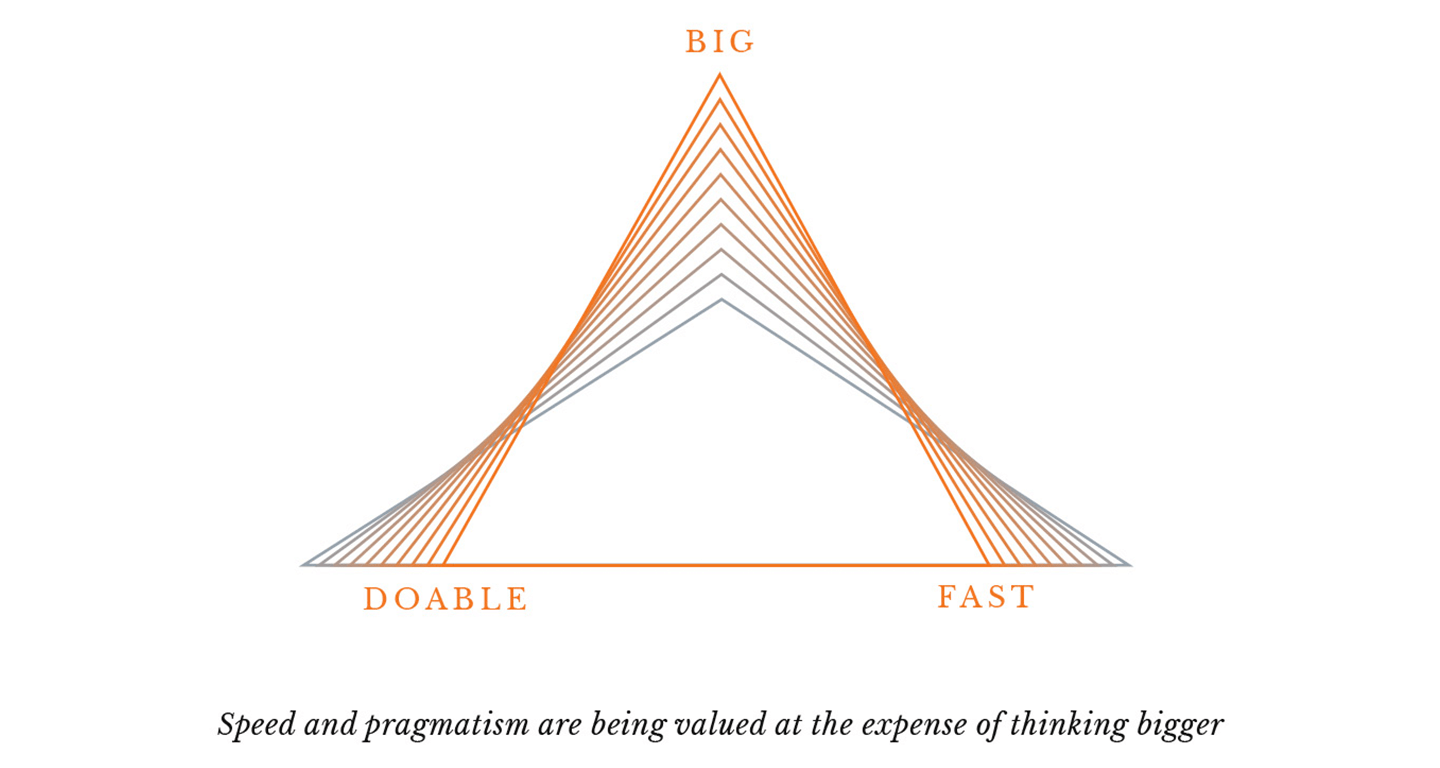
Life After Lean Startup: Why Critical Thinking Is The Key To Building Profitable Businesses
The obituary of the lean startup revolution will say that it helped to inject customer centricity, greater flexibility and speed into a lot of large organizations. It will describe the smiles on the faces of enthused employees waving post-it’s in sunlit offices cluttered with soft furnishing and kanban boards. It will describe how the waterfall plan became a whirlpool of design sprints, and how a million new ideas, concepts and features were taken from scribbles to MVP. But it won’t say that it helped large corporates to reliably capture value for customers or shareholders.
And here’s why:
The critical thinking muscle that is necessary to identify real consumer pain points, new markets to meet these consumers and a product and business model that can dominate that market, has atrophied in many large corporates. Much of this decline is attributable to the mindset engendered by lean startup, which celebrates speed and pragmatism at the expense of thinking bigger.

Thinking big requires us to balance the pressures of moving quickly with a deliberate and self-aware examination of the steps we are taking to make important decisions. Critical thinking is the modus operandi that can help leaders, product owners and consultants ask better questions, make more informed judgements and protect us from retreating into the world of optimization (and short-term solution orientation), at the expense of real innovation. It is best defined as the ‘active, persistent and careful consideration of any belief or supposed form of knowledge in light of the grounds that support it, and the further conclusions to which it tends’.
What we are seeing across categories – from CPG to Financial Services, Utilities and Automotive – are teams using the tools of lean startup to superficially answer strategic questions, make swift decisions and move forward. Although this is not a universal truth, it is a strong signal that the deliberative (and often difficult) process of debate required to identify bigger growth spaces are falling between the stacks of glossy templates.
Now is the time to declutter. Four critical questions should be the litmus test for a well-considered future product, service or offer. They are questions businesses can use to conduct a pre-mortem, before embarking on their hunt for growth, or to evaluate the decision-making process behind an initial concept.
Critical thinking checklist
What insights have we generated to suggest there is a pain point and problem to solve?
Hint: An insight is not an observation. If we are building a solution we need to get behind the obvious. For example, the fact that ‘consumers are becoming more self-aware of their carbon footprint’ signals something, but we need to push our thinking further to get to a real insight.
What things will make or break the business model of a new product or service in this space?
Hint: This means identifying the commercial levers that have the greatest relative impact on projected revenue and costs. Although you might think you know what these are, creating a schematic excel model will help you to prove or disprove your hunch, and play with different variables to see the impacts on gross profit and costs. A great example of this in action here.
What are the big and important assumptions that underpin this opportunity space?
Hint: Some assumptions we make are more obvious than others. Check that you haven’t taken something to be true and forgotten to flag at as an assumption that needs to tested and validated.
Have we considered alternative ways of addressing this opportunity space?
Hint: It is common to frame options that limit our field of play to either option A or option B, but often there are other routes lurking beyond our field of vision that we haven’t considered. Create moments in your process where you bring in a plurality of viewpoints to widen your spectrum of thinking.
The purpose of these questions is to make all of us (product owners, leaders, investors and consultants) think harder and more holistically. They are intended to balance thinking fast with thinking slow; simplifying complex questions without becoming simplistic; being confident to proceed without being overconfident. If we keep asking ourselves these questions, and embrace the intellectual humility that is required to answer them, we should find that we develop a stronger and more considered point of view about where we should invest, and how we unlock new value. The future growth prospects of many large businesses depend on it.
Postscript : Critical thinking applied
No one likes an armchair critic, and even less a consultant who asks a few questions, ends with a rhetorical flourish and then leaves the room. So in my next post I’m going to stick my neck out and try to apply these four critical questions to a scenario many of us will be familiar with. Stay tuned.
Download the critical thinking checklist here:

frog, part of Capgemini Invent is a global design and innovation firm. We transform businesses at scale by creating systems of brand, product and service that deliver a distinctly better experience. We strive to touch hearts and move markets. Our passion is to transform ideas into realities. We partner with clients to anticipate the future, evolve organizations and advance the human experience.
We respect your privacy
We use Cookies to improve your experience on our website. They help us to improve site performance, present you relevant advertising and enable you to share content in social media. You may accept all Cookies, or choose to manage them individually. You can change your settings at any time by clicking Cookie Settings available in the footer of every page. For more information related to the Cookies, please visit our Cookie Policy.